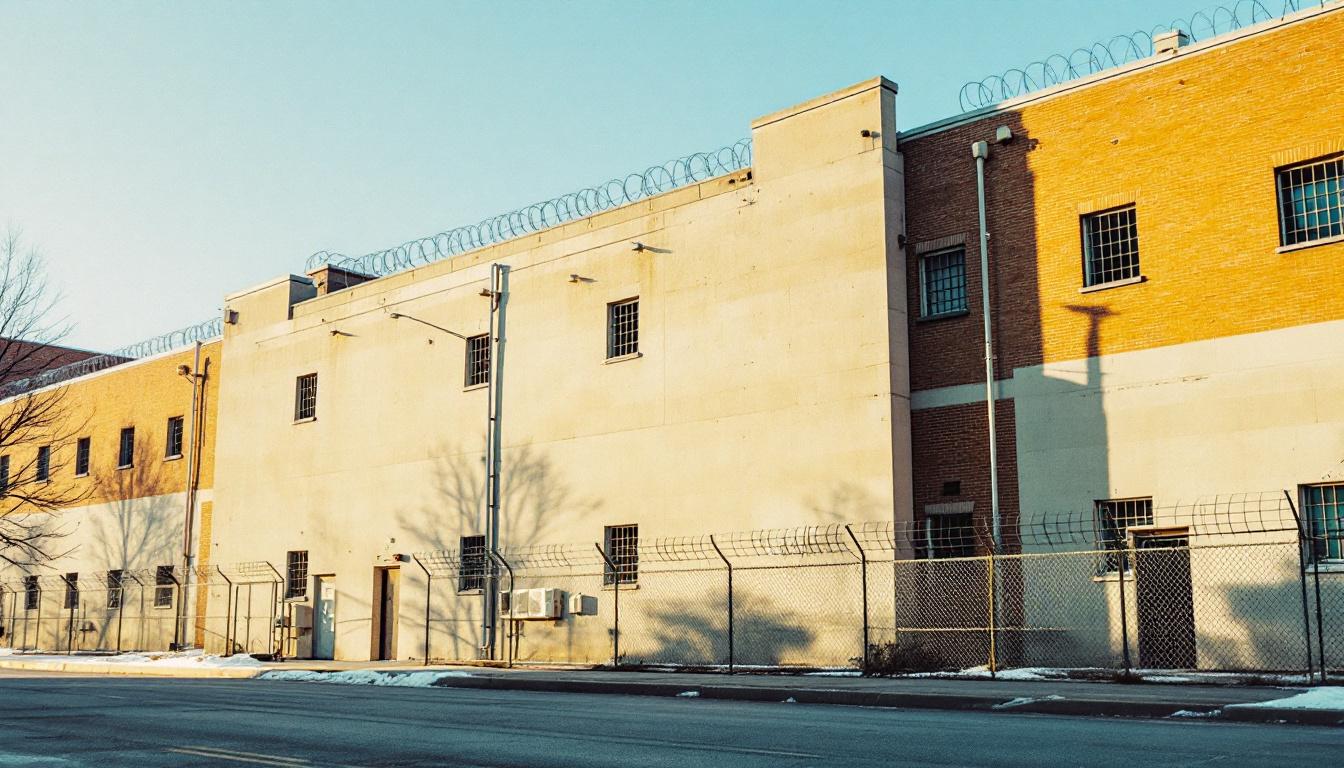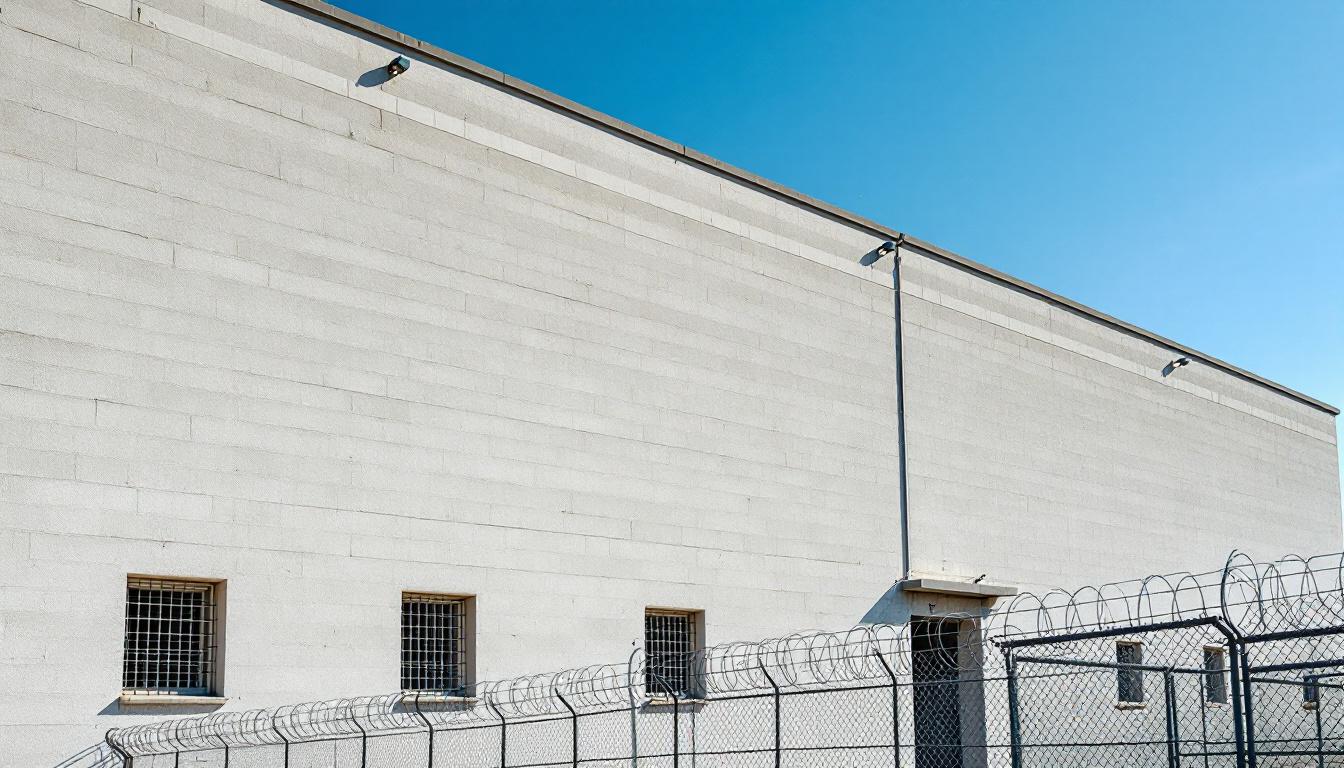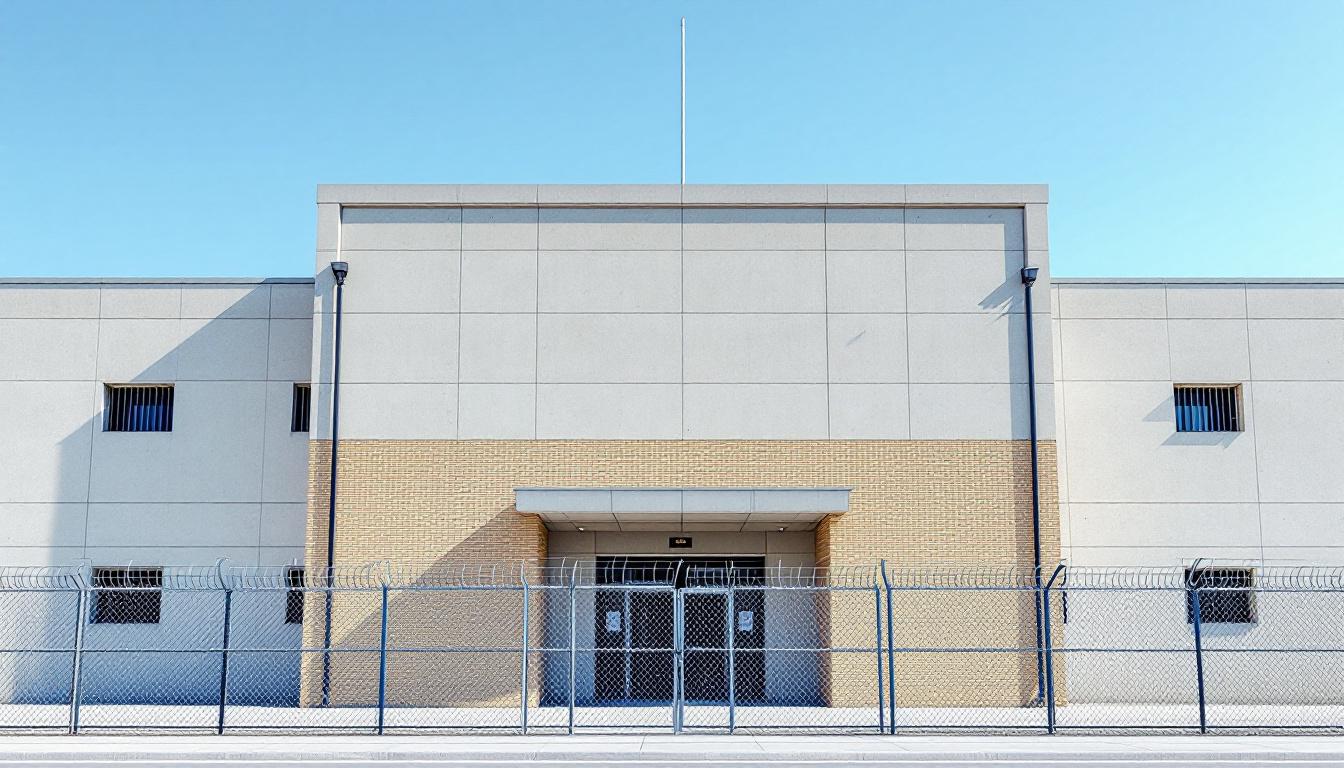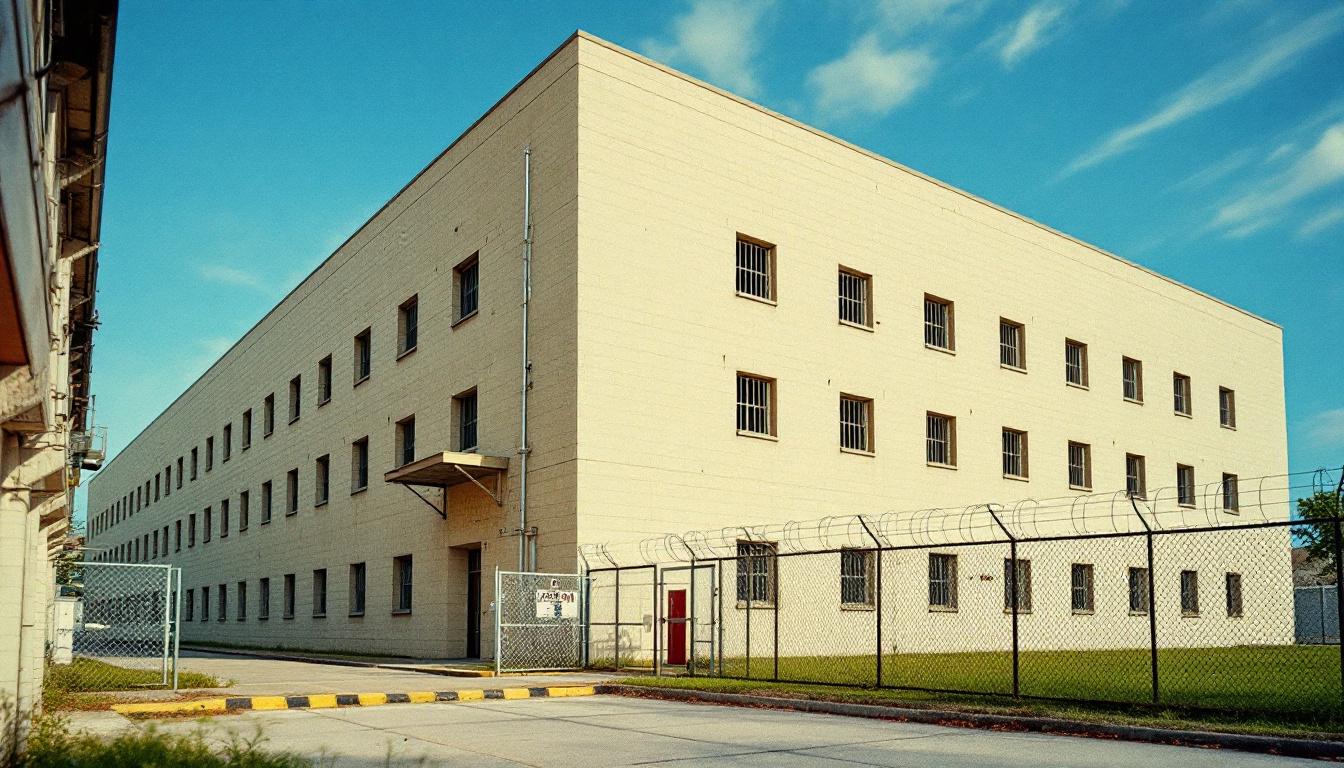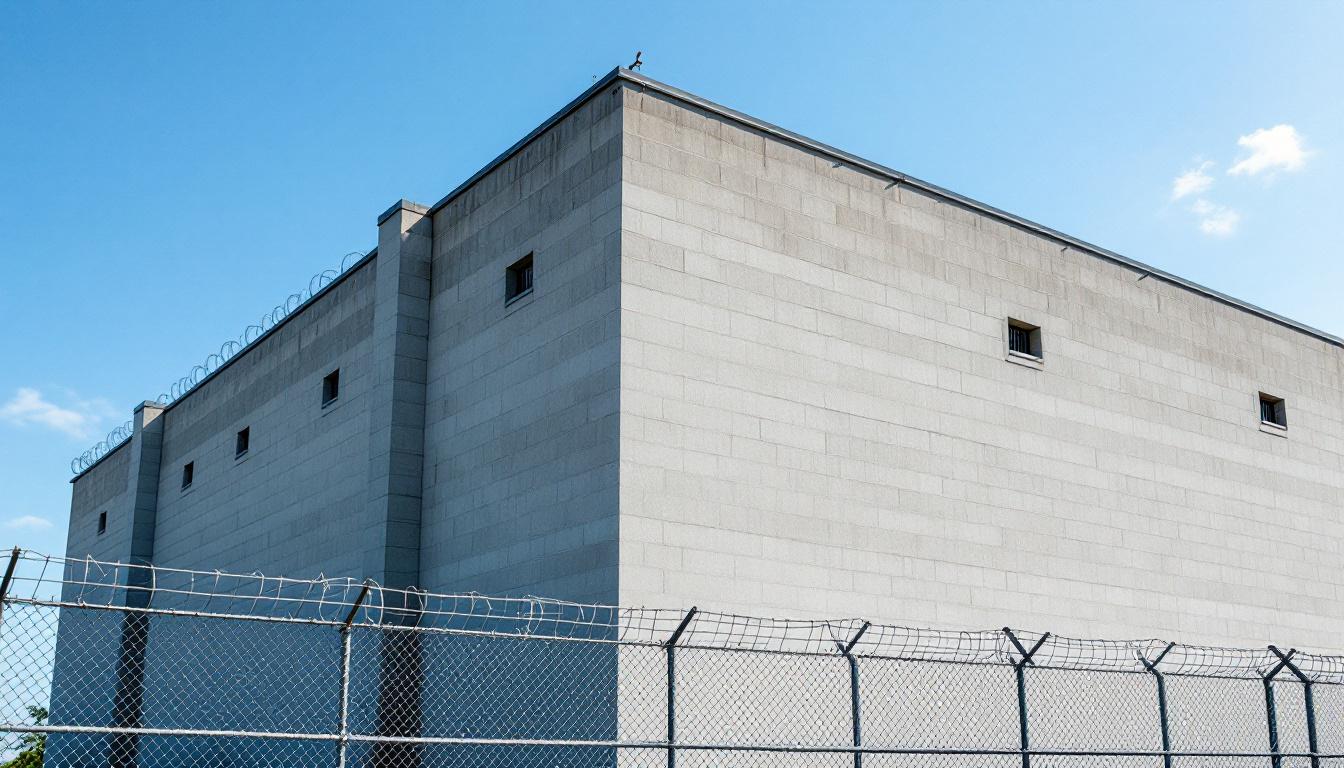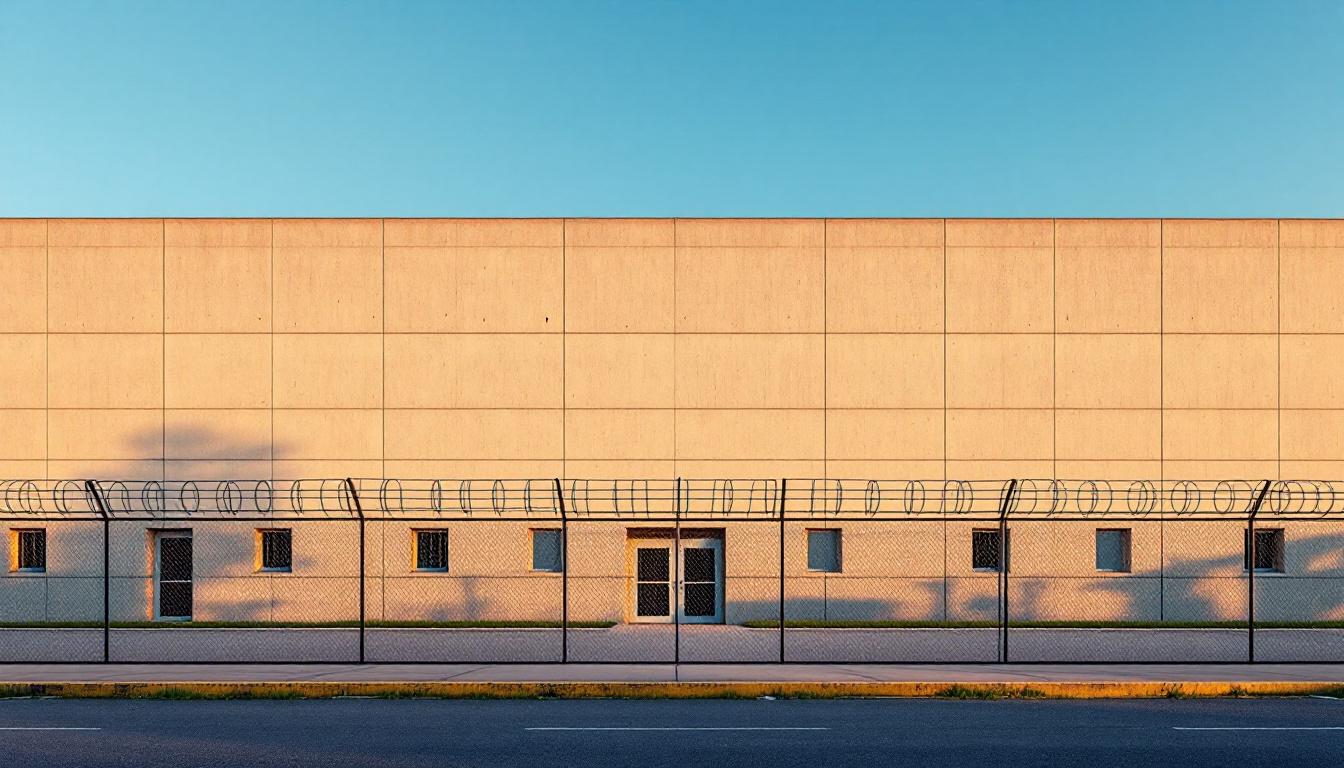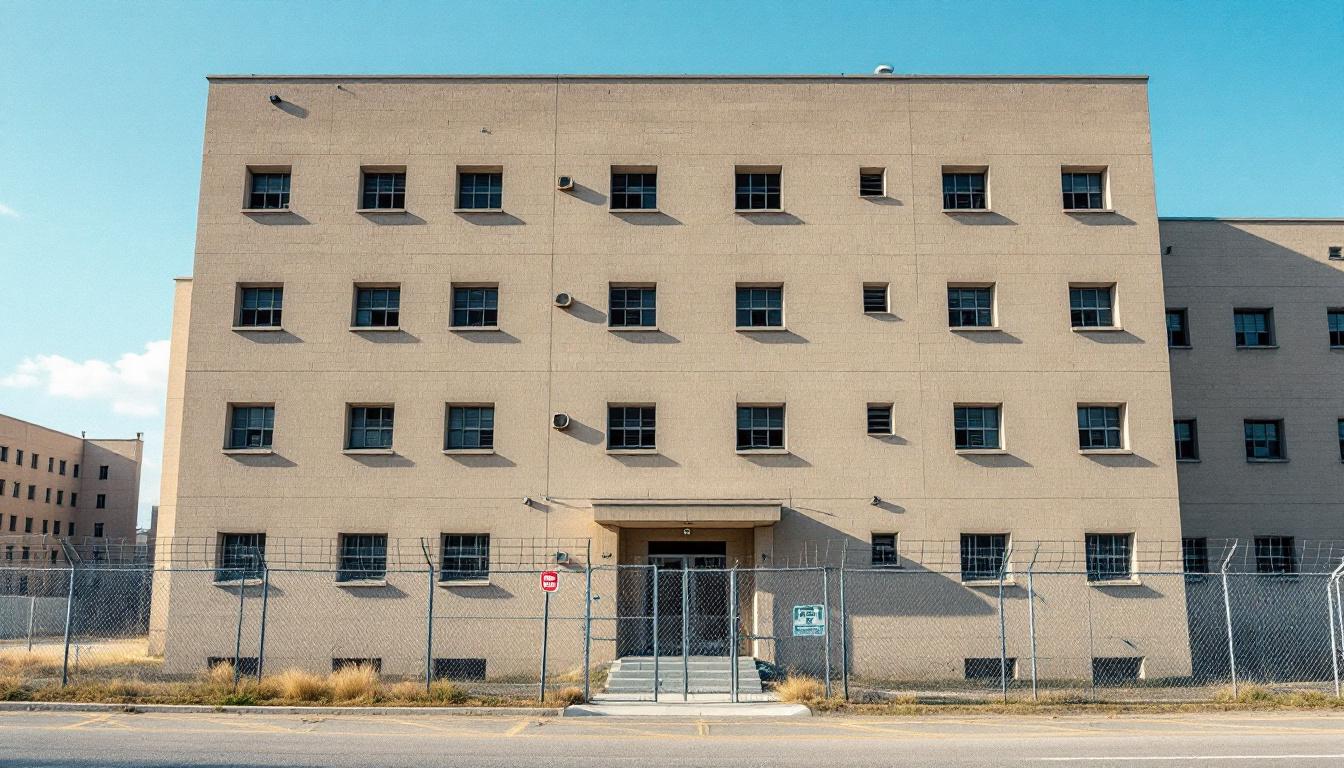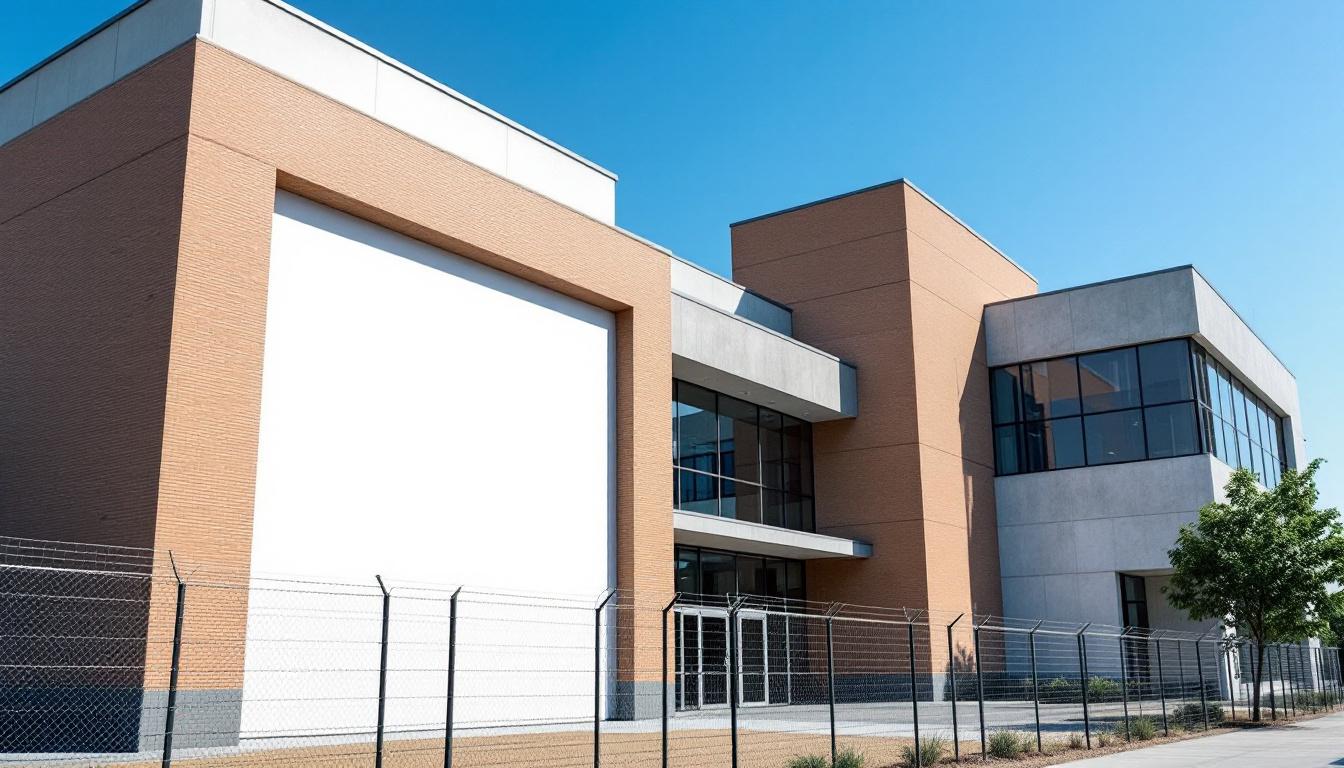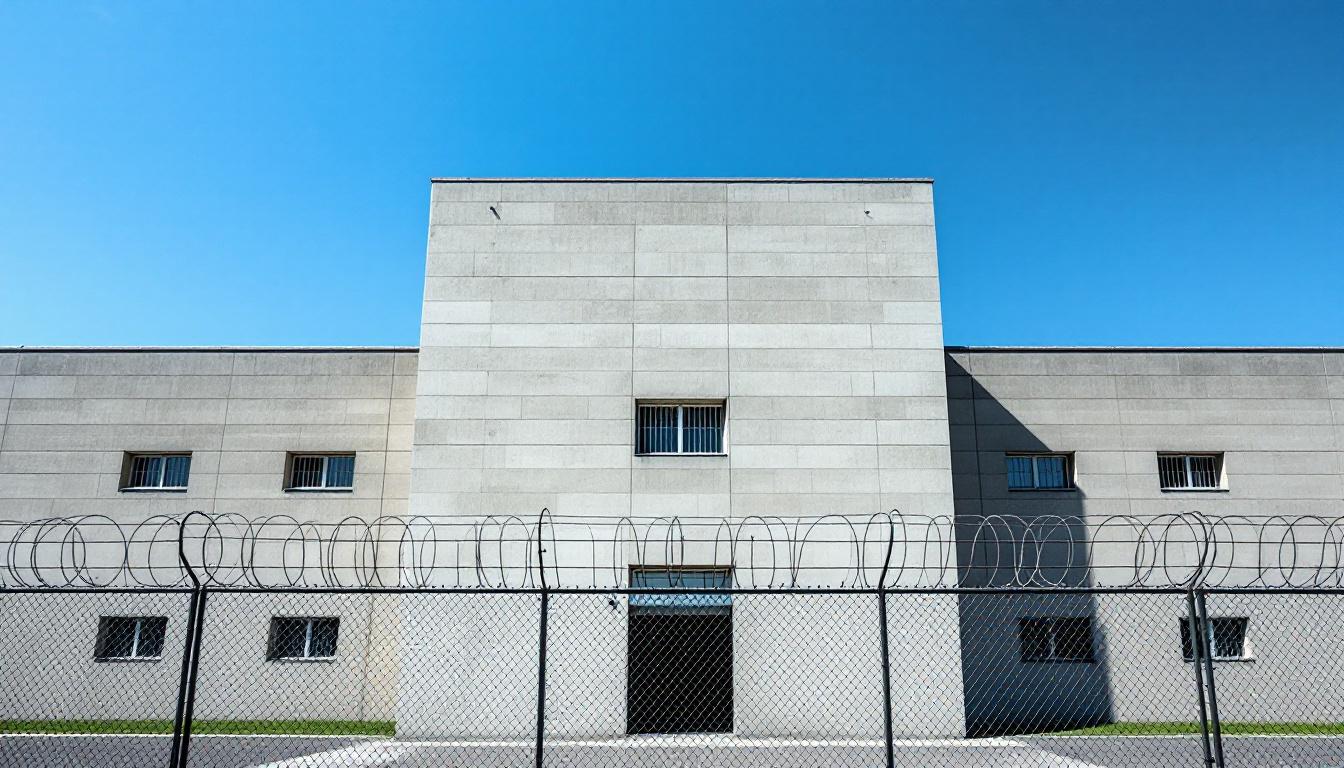
Quick Navigation
How to contact an inmate at Limestone Correctional Facility
This comprehensive guide will walk you through how to connect with an inmate at Limestone Correctional Facility. Follow the steps below to find an inmate and send letters and photos:
- Search for the inmate using our search tool below
- Create your account or log in to Penmate
- Write your message (up to 6,000 characters)
- Send instantly - inmates receive printed copies daily
Find an Inmate
Search for an inmate to start communicating today
Tip: You can search by first name, last name, or inmate ID number
To contact a person at Limestone Correctional Facility start by searching for the person on the official facility website. Perform a search by following these steps:
- Step 1: Enter their first name and last name into the search form and click "Search"
- Step 2: Locate their inmate record
- Step 3: Write down their Inmate ID and any housing information provided
Important! Be sure to enter the person's full name. Nicknames should not be used.
How to Send Messages to Inmates

You can use your phone or computer to send emails, letters, and photos to an inmate. Messages are sent electronically to inmate tablets or kiosks at the facility. If you would like to send a message, start by searching for an inmate at Limestone Correctional Facility.
Sending Photos and Postcards

A great way to send love and support to a loved one at Limestone Correctional Facility is to send photos and postcards. It only takes a few minutes to send photos from your phone and it makes a huge difference. You can also mail postcards with words of support and inspiration, or design your own postcard for special moments like birthdays and holidays.
Important! Be sure not to send any explicit photos or they may not be approved by the facility. You can also use a photo printing app like Penmate to make sure your photos are printed at the correct size (4x6 or 3x5) and are mailed according to the rules and regulations of Limestone Correctional Facility.
Frequently asked questions about Limestone Correctional Facility
-
How long does it take to deliver a message?
If you're sending an email message your letter is usually delivered within 24-48 hours. For messages sent via mail you should expect delivery within 3-7 days. All messages will need be approved by Limestone Correctional Facility.
-
How much does it cost to send a message to Limestone Correctional Facility?
You can send a message free using your phone or mail a message via USPS for the price of a $0.60 stamp and envelope. You can also purchase credits or e-stamps from services starting at $1.99.
-
What services can I use to contact an inmate at Limestone Correctional Facility?
Penmate
You can use Penmate to send letters and photos to an inmate from your phone. It's an easy way to stay in touch during your loved one's incarceration. Use the inmate locator to find an inmate's location and contact information, then you can send messages within a few minutes.
Securus messaging
Securus may be another option for communicating with an inmate at Limestone Correctional Facility. You can create a friends and family account and purchase credits to send messages. All messages will be reviewed and must be approved by the facility.
JPay
Some county jails and state prisons may support sending messages with JPay. You must register an account with the system, find your loved one, and purchase stamps to send messages. For some locations you can also attach photos.
Smart Jail Mail
You may also check if Smart Jail Mail is available at Limestone Correctional Facility. Smart Jail Mail is operated by Smart Communications and has contracted with some state and county jails. After purchasing credits, your messages and photos are sent to the facility, printed out, and then handed out to your loved one.
-
What is the mailing address of Limestone Correctional Facility?
Mailing address:
Limestone Correctional Facility
28779 Nick Davis Rd
Harvest, AL 35749
Phone: (256) 233-4600Business hours:
- Monday: Open 24 hours
- Tuesday: Open 24 hours
- Wednesday: Open 24 hours
- Thursday: Open 24 hours
- Friday: Open 24 hours
- Saturday: Open 24 hours
- Sunday: Open 24 hours
-
What are the visiting hours at Limestone Correctional Facility?
Visiting hours at Limestone Correctional Facility vary by housing unit and security level. Generally, visits are scheduled on weekends and holidays, with some facilities offering weekday visits. Contact the facility directly at (256) 233-4600 or check their website for the current visiting schedule. Visits typically last 30-60 minutes and must be scheduled in advance.
-
What items are prohibited when sending mail to Limestone Correctional Facility?
Prohibited items typically include: cash, personal checks, stamps, stickers, glitter, glue, tape, staples, paperclips, polaroid photos, musical or blank greeting cards, hardcover books, magazines with staples, and any items containing metal or electronics. Only send letters on plain white paper with blue or black ink. Photos must be printed on regular photo paper (no Polaroids). Always check with Limestone Correctional Facility for their specific mail policies.
-
How do I send money to an inmate at Limestone Correctional Facility?
You can send money to an inmate at Limestone Correctional Facility through several methods: 1) Online using JPay, Access Corrections, or the facility's approved vendor, 2) Money orders mailed directly to the facility with the inmate's name and ID number, 3) Kiosks located in the facility lobby, or 4) Over the phone using a credit or debit card. Fees vary by method, typically ranging from $2.95 to $11.95 per transaction.
-
Can I schedule a video visit with an inmate at Limestone Correctional Facility?
Many facilities now offer video visitation as an alternative to in-person visits. At Limestone Correctional Facility, video visits may be available through services like Penmate, Securus Video Connect, GTL, or ICSolutions. Video visits typically cost $10-20 for 20-30 minutes and must be scheduled in advance. You'll need a computer or smartphone with a camera and reliable internet connection. Contact the facility for their specific video visitation policies and approved vendors.
-
What identification do I need to visit an inmate at Limestone Correctional Facility?
All visitors must present valid government-issued photo identification such as a driver's license, state ID, passport, or military ID. Minors must be accompanied by a parent or legal guardian who can provide the minor's birth certificate. Some facilities require visitors to be on the inmate's approved visitation list, which may require a background check. Contact Limestone Correctional Facility for specific ID requirements and visitor approval procedures.
-
How can I find out an inmate's release date?
To find an inmate's release date at Limestone Correctional Facility, you can: 1) Use the online inmate search tool if available, 2) Call the facility's records department, 3) Contact the inmate's case manager or counselor, or 4) Have the inmate provide this information during a call or visit. For privacy reasons, some facilities only release this information to immediate family members.
Facility Overview
Contact Information
Limestone Correctional Facility28779 Nick Davis Rd
Harvest, AL 35749
Phone: (256) 233-4600
Official Website

About Limestone Correctional Facility
Nestled within the agricultural landscape of Harvest, Alabama, this state correctional facility operates as an integral component of the broader corrections network serving north-central Alabama communities. Through its systematic approach to incarceration management, Limestone Correctional Facility processes various aspects of resident supervision while maintaining connections to the regional correctional infrastructure that spans across the Tennessee Valley area.
The facility typically emphasizes structured programming designed to address multiple facets of resident development during incarceration periods. Educational initiatives may include basic literacy advancement, vocational skill-building opportunities, and substance abuse intervention programs that align with state-mandated rehabilitation frameworks. These residents services often incorporate counseling components, work assignment programs, and reentry preparation activities that help individuals transition through different phases of their correctional experience. The AL correctional facility generally coordinates with community organizations and state agencies to provide comprehensive support systems.
Within Alabama's southern correctional landscape, this Harvest-based institution functions through established protocols that balance security requirements with rehabilitation-focused programming. The facility's operational processes typically involve structured daily routines, educational program participation, and various forms of therapeutic intervention designed to address underlying factors contributing to criminal behavior. As residents progress through their sentences, the correctional facility may offer graduated programming levels that prepare individuals for eventual community reintegration while serving the broader public safety mission throughout the region.
Programs & Services
Educational advancement and skill development form the cornerstone of rehabilitative initiatives at Limestone Correctional Facility, where residents engage in comprehensive programming designed to address both immediate learning needs and long-term reintegration goals. The facility's approach emphasizes practical skill acquisition alongside academic achievement, recognizing that meaningful change occurs when individuals can envision concrete pathways toward productive futures. Through carefully structured initiatives, residents may access opportunities that bridge educational gaps while simultaneously developing marketable competencies essential for successful community transition.
Academic programming typically encompasses multiple educational pathways, including high school diploma completion initiatives that serve residents who previously lacked formal educational credentials. ESL (English as Second Language) instruction often provides crucial language development support for residents whose primary language differs from English, facilitating better communication skills and broader educational participation. These educational initiatives frequently incorporate individualized learning approaches, allowing residents to progress at appropriate paces while receiving targeted instruction that addresses specific academic deficiencies and builds upon existing knowledge foundations.
In addition to these academic offerings, the facility may deliver specialized vocational training, including upholstery instruction that provides residents with hands-on experience in a marketable trade skill. Work release initiatives typically offer qualified residents opportunities to maintain employment in the community while serving their sentences, fostering responsibility and economic stability. Faith-based programming often provides spiritual guidance and community support, creating additional networks of accountability and encouragement that extend beyond incarceration periods, thereby supporting holistic rehabilitation approaches that address multiple dimensions of personal development and community integration.
Daily Life & Visitation
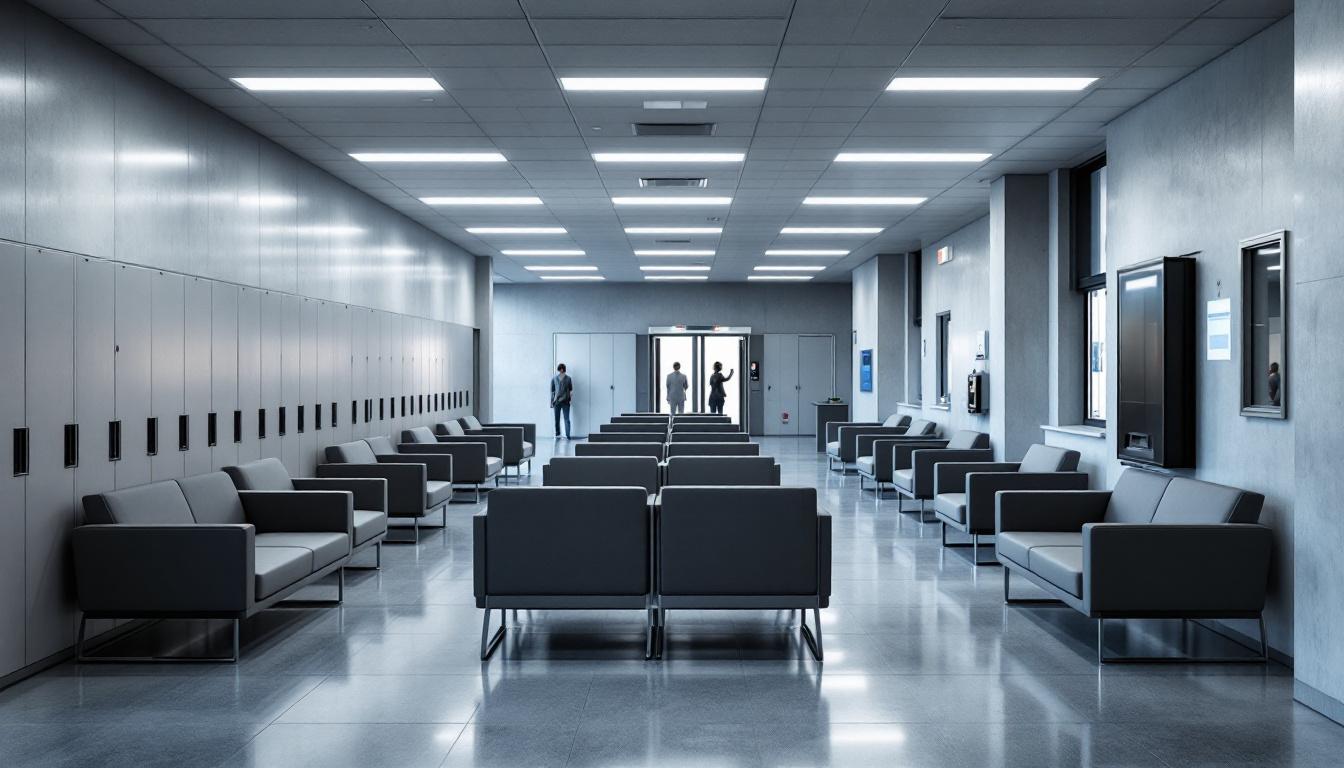
The carefully orchestrated rhythm of institutional life currently shapes every aspect of the residential experience, where predetermined schedules deliver consistency and predictability that many residents find grounding. Each day typically unfolds according to established timeframes that continue to provide structure through regulated meal periods, work assignments, recreational opportunities, and rest periods, creating a framework that helps residents navigate their time with clear expectations and routine.
In addition to this structured timeline, living accommodations generally consist of dormitory-style housing units or individual cells, depending on security classification and available space. Residents typically share living areas with assigned roommates and have access to basic furnishings, personal storage space, and common areas within their housing units. Meals are usually served in designated dining facilities at scheduled times, with menus that may vary but generally provide nutritionally balanced options. Personal property policies typically allow residents to maintain limited personal items, while commissary services may offer additional food items, hygiene products, and other approved goods for purchase.
Despite this highly regulated environment, programming schedules often deliver opportunities for personal growth through educational classes, vocational training, and recreational activities that may include gymnasium access, outdoor exercise periods, and organized sports when available. Visitation policies generally allow family members and approved visitors to maintain contact during designated hours and days, while telephone and correspondence privileges typically provide additional means of communication with loved ones. Work assignments within the facility often include food service, maintenance, laundry operations, and other institutional support roles that may provide residents with structure, purpose, and sometimes modest compensation during their incarceration.
Ready to Connect?
Start communicating with your loved one today
Search for an Inmate
